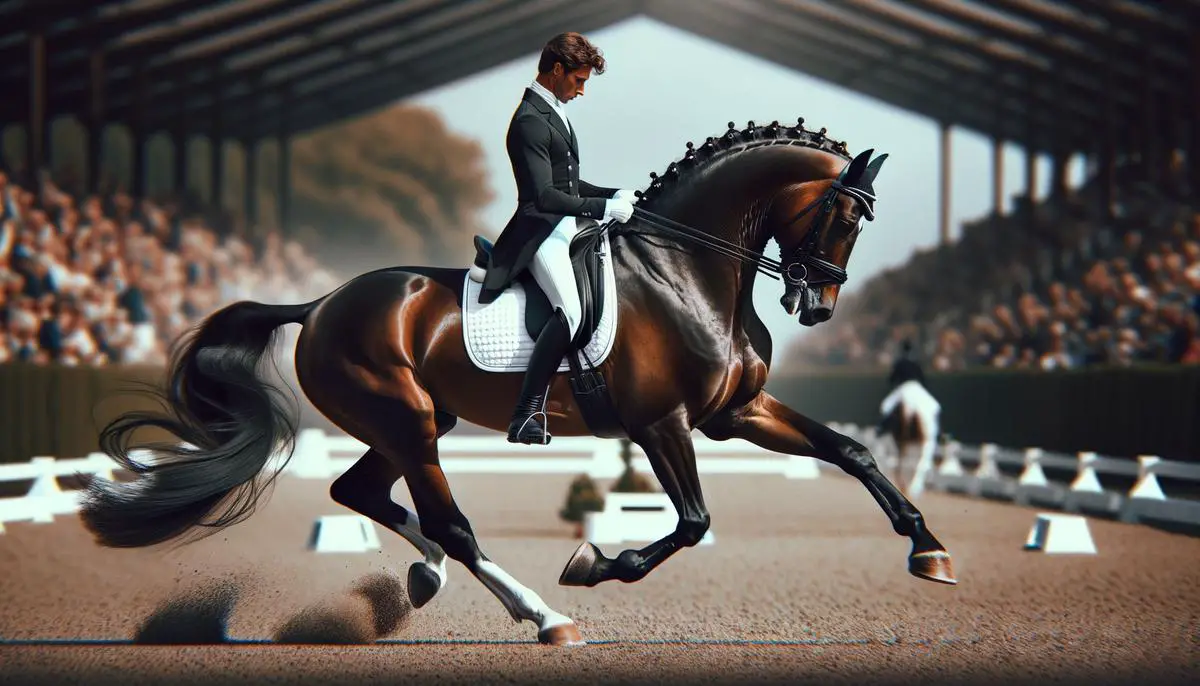The elegance of dressage is epitomized by the harmonious dance between horse and rider, a ballet that demands nothing less than the pinnacle of equine athleticism and cooperative spirit. At the heart of this prestigious equestrian discipline lies the quest for the perfect dressage breed—a horse that not only exhibits grace and power but also shares a profound connection with their human counterpart. Delving into the depths of what builds the ideal dressage companion, this discussion is tailored for both the seasoned equestrienne and the curious enthusiast. From the inherent temperament and precise movement to the critical conformation traits, we unravel the fabric that weaves together the successful dressage horse. As we embark on this journey through the world of dressage breeds, we uncover the celebrated qualities that make certain breeds stand out, the indispensable training that shapes world-class competitors, and the indomitable spirit of the rider-horse partnership that captivates audiences worldwide.
Table of Contents (Horspedia)
Characteristics of Dressage Breeds
Finding the Perfect Dressage Partner: It’s All About the Breed
When it comes to the graceful world of dressage, not just any horse will do. You’re looking for the equine equivalent of a ballet dancer: strength, elegance, agility, and, yes, a bit of pizzazz. But what factors make a breed stand out as an ideal choice for dressage? It’s like putting together a puzzle where each piece is crucial to the final masterpiece. Let’s trot through the key elements that make a breed perfect for this sophisticated equestrian sport.
First up, temperament is a big deal. Dressage requires an immense amount of concentration and a calm, willing attitude. Breeds known for their even tempers and eagerness to learn are stars in the dressage ring. They need to be attentive and responsive to their rider’s cues without getting too shook up when facing challenging new movements or bustling show environments.
Next stop, conformation. That’s a fancy term for a horse’s body build and structure. Breeds with a natural uphill build lend themselves well to dressage because they can easily shift their weight to their hindquarters. This enables those breathtaking extended trots and dramatic collected gaits. A well-proportioned neck and a strong back also contribute to a horse’s ability not only to perform dressage movements with precision but also to do so without injuring themselves.
Movement, oh, the movement! We’re talking about a horse’s natural way of walking, trotting, cantering, and galloping. For dressage, the more fluid and elastic the movement, the better. Breeds that display a natural swing and cadence in their step catch the judges’ eyes and rack up points. High-stepping trots and smooth, round canters are as mesmerizing to watch as they are fun to ride—if you’ve ever seen a top dressage horse perform, you know the feeling. It’s like poetry in motion.
Trainability is huge. Dressage is like a long-term relationship; it requires patience and a lot of understanding between the horse and rider. Breeds that are quick to learn and keen to please will excel in dressage because they can progressively master the complex levels of training. These breeds soak up new information like a sponge and are often eager to see what’s next on their learning journey.
Last but not least, let’s not forget about a breed’s history. Certain breeds have been refined over generations specifically for their aptitude in dressage. For example, Warmbloods have a substantial presence in the dressage scene due to their breeding for sport horse disciplines, including dressage. Their genes have been mixed and matched to highlight characteristics ideal for dressage—a testament to the power of selective breeding.
Choosing the right breed for dressage is a combination of these key traits. While any horse with the right training and a willing heart can enjoy dressage, some breeds have a leg-up in the pursuit of dressage glory. Whether it’s the regal Warmbloods, the mighty Andalusians, or the versatile Friesians, the ideal dressage breed combines temperament, conformation, movement, trainability, and heritage into one spectacular package. Keep these traits in mind and your search for the perfect dressage partner just got a whole lot easier. Happy riding!
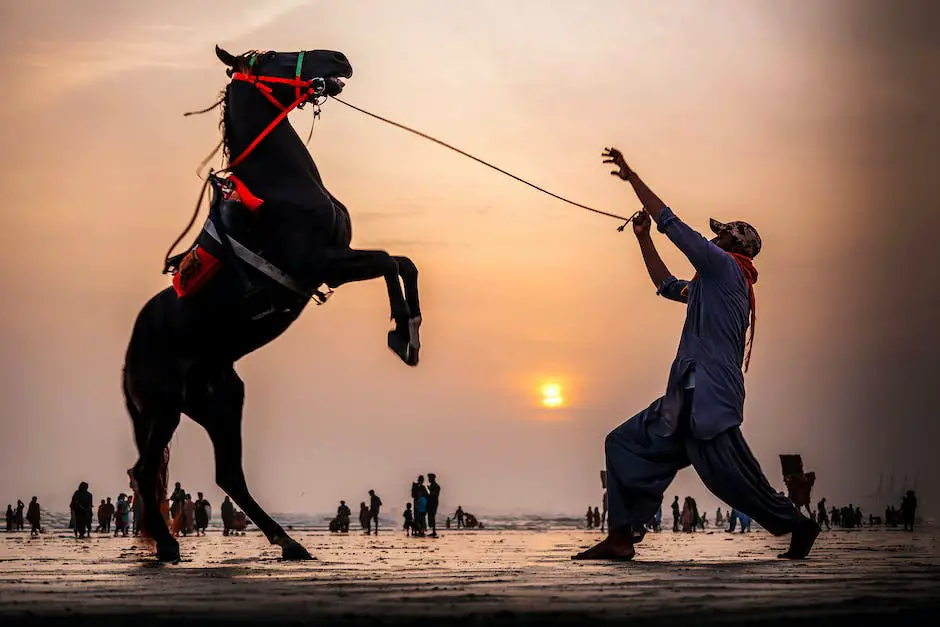
Popular Horse Breeds for Dressage
When it comes to dressage, not all horses are created equal. There’s a handful of breeds that tend to catch the judge’s eye more often, thanks to their natural aptitude for the sport. When prowling the dressage arena, certain breeds stand out, and it’s not just about their majestic looks – it’s about what these breeds bring to the table in terms of performance and ability.
First up are the Dutch Warmbloods. Hailing from the Netherlands, this breed holds a reputation for strength and elegance. These horses are often seen prancing through dressage routines with a kind of precision that’s hard to match. Their harmonious blend of power and grace makes them a favorite among dressage enthusiasts. It’s no surprise that they consistently rank high in international dressage competitions.
Next, let’s talk about the Hanoverians. Originating from Germany, these horses are dressage superstars. Hanoverians have a special athleticism that translates into fluid and expressive movements. They’re like the ballerinas of the equestrian world, excelling with their elegant gaits and the ability to execute demanding maneuvers that dressage requires.
Then there are the Oldenburgs, a breed with an imposing frame that’s built to perform in the dressage ring. They possess a lofty trot and a canter that just screams dressage. Oldenburgs are known for their willingness to work and their capability to develop a strong rapport with their riders, which enhances their performance.
Trakehners, another gem from Germany, bring an air of nobility to the arena. They boast a supreme balance and rhythm, characteristics highly sought after in dressage. Their sensitive nature and intelligence mean that these horses can tackle complex sequences with finesse.
Of course, we must also mention the Lusitanos. These Portuguese horses have a heritage deeply rooted in classical dressage. They might not be as large as some of their Warmblood cousins, but they make up for it with agile and animated movements. Their showmanship is apparent, making them a treat to watch under the dressage spotlight.
Lasty, let’s not forget the Swedish Warmblood. A relatively lesser-known breed in the general equestrian realm, but definitely a force in dressage circles. Their adaptable and cooperative attitude combined with their physical capabilities make them outstanding dressage partners.
In the dance of dressage, certain breeds definitely have a leg up thanks to their natural abilities and centuries of selective breeding. While this isn’t an exhaustive list, it highlights the breeds that are likely to turn heads and score high in the dressage arena. Remember, while genetics can give a horse an edge, the right training, care, and partnership with a rider are what truly make a dressage star shine.
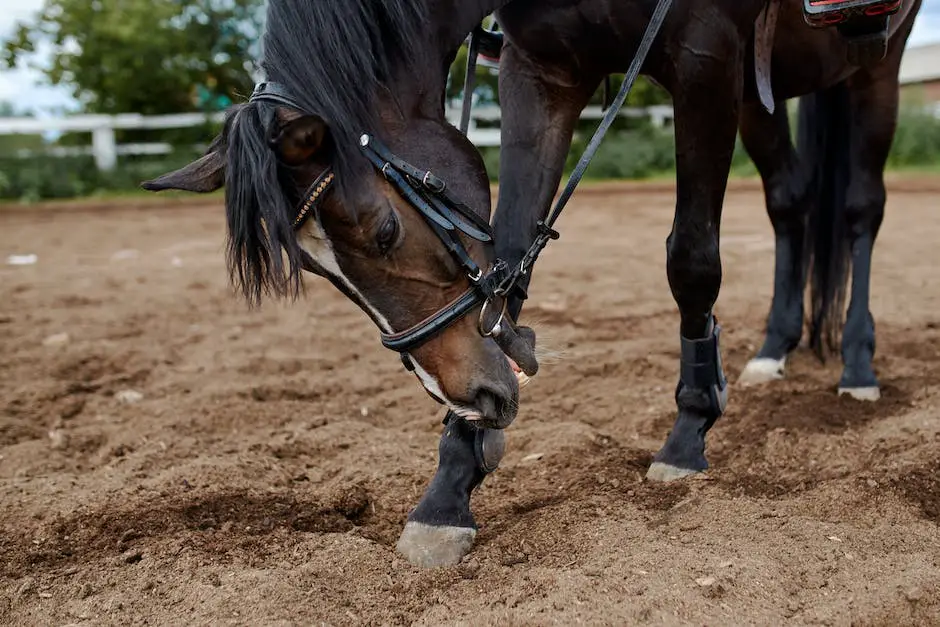
Training Dressage Horses
Among the key aspects of dressage training that cannot be understated is the progressive nature of the schooling process. To start, young horses are not immediately expected to perform complex maneuvers. They begin with the basics, learning responsiveness to the rider’s aids – the subtle cues by which the rider communicates with the horse. These can include leg pressure, seat position, and rein contact. Horses must first understand and respond reliably to these signals.
Consistency in training sessions is a cornerstone of dressage. Horses thrive on routine and predictability, making it easier for them to absorb lessons and refine their skills. Regular workouts help build the muscle memory and strength the horse needs to carry itself with the elegance dressage requires.
Foundation work is followed by a series of schooling exercises that evolve in complexity. These exercises train the horse to balance, flex, and engage its hindquarters – crucial for the sophisticated level of control expected in higher-level dressage. Lateral movements, such as leg-yields, shoulder-in, and haunches-in, are introduced gradually. They develop the horse’s suppleness and ability to move with agility in every direction.
Developing a horse’s natural gait is also part of the process. The goal is to achieve a balance between impulsion (the forward thrust of the horse) and relaxation, allowing for smooth transitions between the walk, trot, and canter. As the horse becomes more proficient, it learns to extend and collect these gaits, showcasing both power and control.
One cannot overlook the importance of rider skill in this equation. A knowledgeable and experienced rider is essential for translating the nuances of the sport effectively to the horse. The rider must possess not only technical ability but also a deep understanding of the horse’s psychology, to foster a partnership based on trust and respect.
Creative dressage exercises also play a role in keeping the horse engaged and motivated. Mixing up routines to include poles, gentle inclines, and varied working environments can keep training sessions from becoming monotonous. When a horse is mentally stimulated, it performs better and is more likely to enjoy its work.
As the horse progresses, competition becomes part of the journey. Initial forays into the competitive world begin at lower levels, and as horse and rider gain experience and confidence, they can move up the ranks. It’s through this gradual exposure to the atmosphere, expectations, and rigors of dressage competitions that a horse is solidified as a top performer.
Underpinning all these technical aspects is the bond between horse and trainer. Without a strong relationship, the pursuit of top performance can become impersonal and stressful for the equine athlete. Every step of the way, their well-being is a priority – from nutrition and stabling conditions to mental health and recovery times.
Remember, while training techniques are critical, the horse’s individual needs and personality should guide each step of the training journey. It is this bespoke approach to training that can elevate a good dressage horse to one of top performance, a partner that moves with precision, power, and poise, in the dance that is dressage.
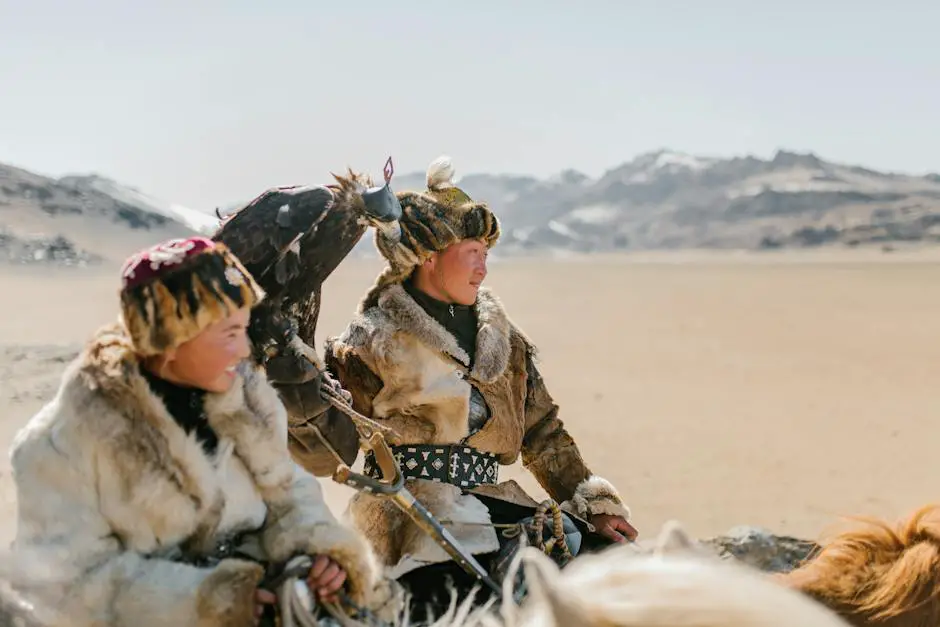
Rider and Horse Partnership
What Role Does The Rider Play in Dressage Success?
In the world of dressage, the conversation often revolves around the magnificence of the horses—those majestic creatures that execute each move with grace and precision. But let’s shift the spotlight for a moment to the often-unheralded architects of the dance: the riders. The rider’s role in dressage success is as crucial as the finest pair of dancing shoes in a ballroom waltz. You can’t have one without the other.
The effectiveness of a rider’s commands, known as “aids,” can make a sea of difference in the arena. It’s the subtleties of touch and the precision of signals that guide the horse through the complex choreography of dressage. A rider’s posture, balance, and ability to communicate clearly and calmly can turn an ordinary routine into a symphony of movements. It’s not just about barking orders; it’s a dialogue where the rider listens as much as they speak.
Strategy comes into play heavily in dressage. Each rider must tailor their approach to the specific strengths and limitations of their horse. Having a deep understanding of dressage fundamentals, the rider must also be able to devise a training plan that pushes the boundaries without causing stress or confusion for the horse. Just like in any sport, the mental game is as important as physical prowess. A good rider walks the fine line between coach and teammate, guiding with conviction while providing unwavering support.
Moreover, it’s not just about having a strategy; it’s also about perfecting the execution of every move. Precision in transitions, the quality of various gaits, and the overall harmony between horse and rider—these are the brushes and paints with which a rider creates art on the dressage canvas. Patience is key; it’s about repetition, tweaking, and enhancing performance with each practice, leading up to those pinnacle moments in competition.
Let’s not forget the rider’s resourcefulness. On competition day, when stress runs high and the unexpected can and often does occur, a rider’s ability to adapt is tested. Knowing when to push a little harder or when to ease back can mean the difference between a good performance and a gold medal. It’s this in-the-moment creativity, the rider’s ability to ‘read the room,’ that distinguishes the greats from the rest.
Lastly, while it’s the horse that executes the jaw-dropping pirouettes and extended trots, it’s the rider who must take responsibility for their role in any shortcomings. Self-awareness and honesty about one’s own performance can foster growth and improvement. Continuous learning and seeking feedback only strengthens this partnership, keeping both horse and rider evolving in skill and expertise.
Remember, dressage is a partnership, and success hinges on the mutual bond and respect between human and equine. Riders are more than mere passengers; they are athletes, tacticians, and artists, without whom the dance of dressage could never be brought to life.
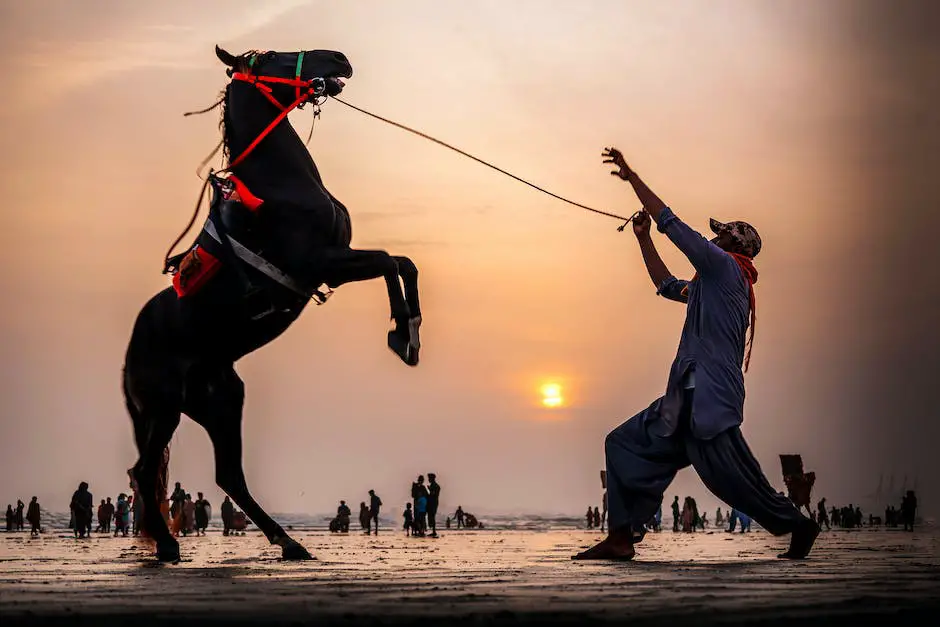
Choosing the Right Dressage Horse
Selecting a dressage horse is a pivotal decision for enthusiasts aiming to excel in this classical equestrian sport. The previous sections have highlighted crucial facets, such as temperament, conformation, movement, trainability, and breed predispositions. Let’s dive into additional considerations that are equally essential for making an informed choice.
Health and Soundness:
A horse’s current health and medical history are non-negotiable factors in the selection process. Prospective buyers should seek a thorough veterinary exam, including flexion tests and possibly X-rays, to uncover any underlying health concerns. Longevity in dressage requires a robust horse free from chronic conditions that could impede training and performance.
Age and Experience:
Aligning a horse’s age and level of experience with the rider’s aspirations and abilities is key. Younger horses may offer the thrill of development and growth, but they demand significant time for training and maturing. On the other hand, older, more experienced mounts could provide immediate opportunities for competition but may have less active years ahead.
Size and Rideability:
Not to be overlooked is the compatibility of horse and rider size. A comfortable fit ensures better communication and effectiveness in training. Moreover, ‘rideability’—the ease with which a rider can train and ride a horse—matters immensely. It influences how smoothly the horse accepts the rider’s aids and its willingness to perform complex dressage maneuvers.
Potential for Progression:
Assessing a dressage horse’s aptitude for progressing through the levels is best done by observing its learning curve during trial sessions. Horses that demonstrate an eagerness to learn and improve with each training are often better suited for the advancing demands of dressage.
Compatibility with Rider’s Goals:
Every rider has unique objectives, be it regional competitions or higher-level aspirations. The chosen horse should align with these goals. This means evaluating whether the horse has the quality and potential to reach the desired milestones and thrive under the pressures of dressage routines and environments.
Budget and Maintenance:
Last but not least, financial considerations play a pivotal role. Beyond the initial purchase, upkeep costs such as stabling, feeding, health care, training, and competition expenses can add up. A realistic budget that considers both short-term and long-term expenses will ensure that the passion for dressage is sustainable over time.
In sum, when deliberating over that perfect dressage partner, look beyond the essential foundations and examine the intricacies that will make the journey with your chosen steed a harmonious and rewarding one. It’s a symphony of factors that comes together to produce the dressage experience of your dreams.
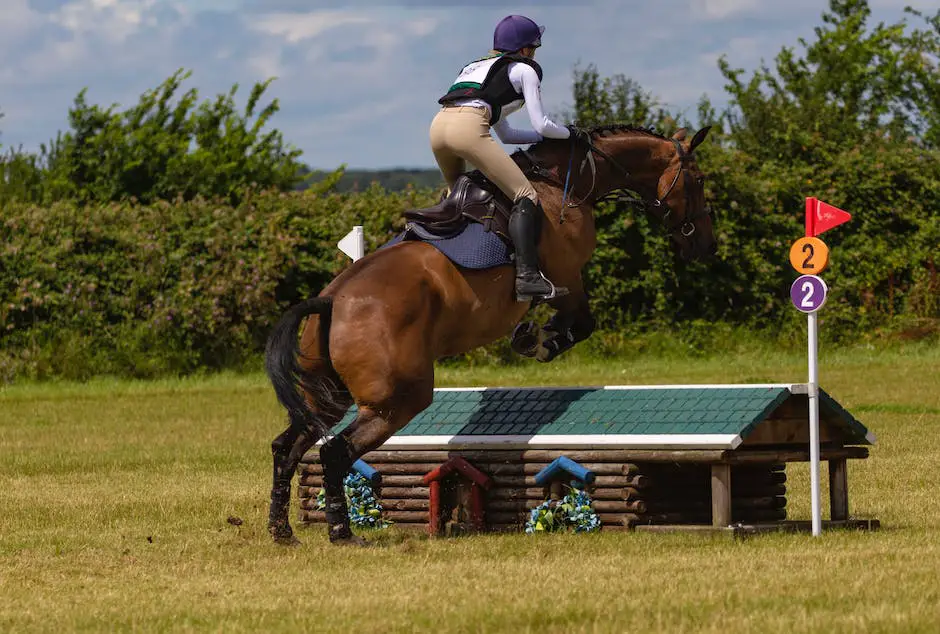
Through the pursuit of understanding and selecting the quintessential dressage horse, we have navigated the nuanced spectrum of breeds ideally suited for the art of dressage. Equipped with insights into the revered characteristics, notable bloodlines, and effective training philosophies, enthusiasts are better positioned to foster the growth of these equine athletes. Moreover, the intricacies of rider-horse interaction have been illuminated, underscoring the mutual respect and connection pivotal to achieving dressage distinction. Aspiring dressage riders are thereby armed with the knowledge to make informed decisions that harmonize with their own aspirations within this exquisite equestrian discipline. Whether it is the magnetic atmosphere of competitive dressage or the pure joy of mastering the dance with a noble steed, the journey is steeped in passion, discipline, and an abiding love for the horse, thus perpetuating the sublime legacy of dressage.
